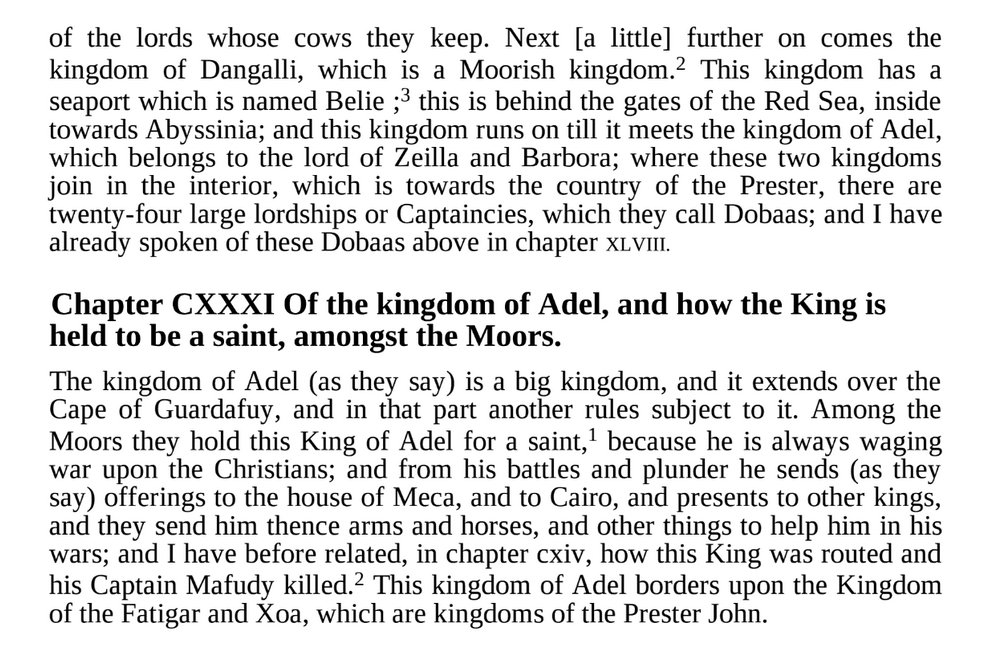True borders? Look at the archeological sites and where they are located in map i showed, that's what constitutes Awdal , among other regions as well. And fits the descriptions the portuguese gave it
We are talking about forts and defenses being built, as i have shown you can see the archeological sites in the map and that general region according to Archeologists had forts and fortresses. Only Waaqoyi lacked fortresses in many of the settlements because how more distant they were from the highlands.
We can't speak on whether Bale or Dawaro lacked forts or fortresses as there hasn't been much archeology in those areas that i am aware of. Also there are questions about Bale and Dawaros exact location as they might have been located more Northerly than south according to researchers who looked at sources.
The first few texts talks about how the natives Bale were driven out by the invasion. Bale was one of the first places Oromo's attacked and invaded and pretty much wiped out. Only a minority of Muslims remained in Bale and some were the early Somali clans that connected the arrival of other newer Ogaden Somalis in the 18th century who assimilated them into a Muslim billingual Somalinized group that traces their ancestry to Somali
And prior to that Oromos came to do the exact same as they did in the Christian highlands as they did with Harrar and around it, they didn't de-islamize it, the deeper contact they made pushing/assimilating other groups like Gurage with them into Harar they adopted the Muslim religion and language of the Muslims living there and embedding themselves in the Muslim political structure in the region.
Like your source says ''More decisive , however were the contacts with the Harrari community of the Town of Harrar, where interrmarriages and political marriages contributed to the conversion of Oromo rural Elite in Harrarghe''
An example of this:
Same happened in the areas North and East of Harar as well.

















